Official spring equinox is around the corner, and even though it will be winter in Alaska for quite a while, I want to share some of my favorite things about sketching in the winter before it is too late.
Here is my unofficial list of what I love to sketch in the winter:
Winter birds
Dormant plants
Tracks in the snow
Snow and ice shapes/ stories the weather leaves us
Winter light
Night skies
The clear weather of March brought us sunny bluebird days and spectacular nights. In the summer the sky will never get completely dark so I also appreciate this time of year when we get to see the night sky. In 2020-21 when I leaned into being home and sketching here all winter I got interested in studying the stars and the night sky. I learned so much from Berta, fellow Boreal Nature Journal sketcher who lives in Edmonton and know a lot about astronomy. Berta makes really cool sketches and moon studies through the telescope and has a series of astronomy nature journals with gray and black paper. She taught us that if you don’t have a telescope you can observe the night sky through binoculars. She also shared this resource, Sky Maps, which is updated every month and notes which celestial objects you can see with your naked eyes. Another thing I learned is that we can see the most texture and detail in the surface of the moon along the edge between shadow and illumination. That makes so much sense based on what I’ve learned as a science illustrator and shading forms (you see the most texture and detail in the area between the highlight and the shadow). Right now the moon is pretty much full, but as it gets smaller we can watch it highlight different features.
I do not know the constellations very well, but I have found that sketching the stars helps me to find them and know them. Being able to locate some of the brightest stars helps me place myself in the night sky (which is often moving). To the south I look for these three bright stars that make up the winter triangle: Procyon (part of Canis Minor), Sirius (part of Canis Major or Orion’s hunting dog), and Betelgeuse (Orion’s “shoulder”).
To the north I look for the Big Dipper, and Polaris, who is always north and stays fixed while the bear (Ursa Major) rotates around. I love learning about constellations and astrology as well. I know this may not be very scientific but I think it is pretty cool that generations of people and all different cultures have been looking up at the sky and telling stories about what they see there.
@ilisaqativut posts about the Iñupiaq language learning and Instagram and shared these words that have no English translations, including this description of the planet mars about a red and white fox fighting over a den.
I like the idea of drawing the stars and then connecting them into my own constellations. Artist Hannah Perrine Mode did this with a beautiful and inspiring project she did for Google.
In addition to sky maps I also like to use the app called Sky Guide that shows me what stars I am seeing based on where I point my screen. I like to work from that and sketch in pencil with my headlamp on the red setting (so it doesn’t spoil my night vision). I’ll use those sketches as reference for later.
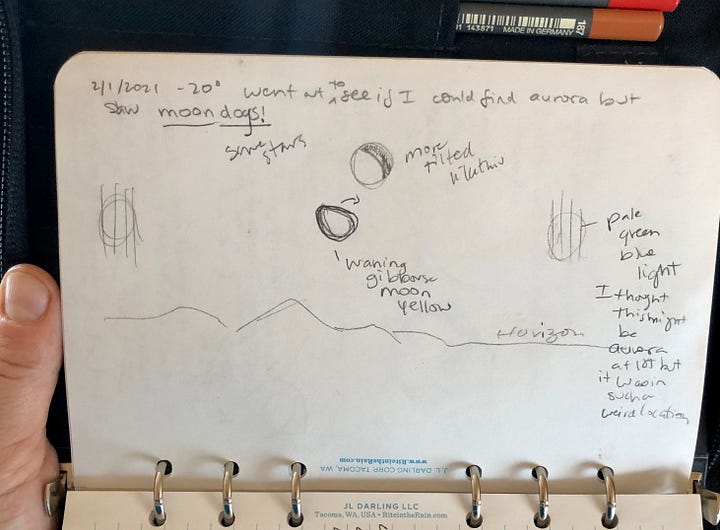
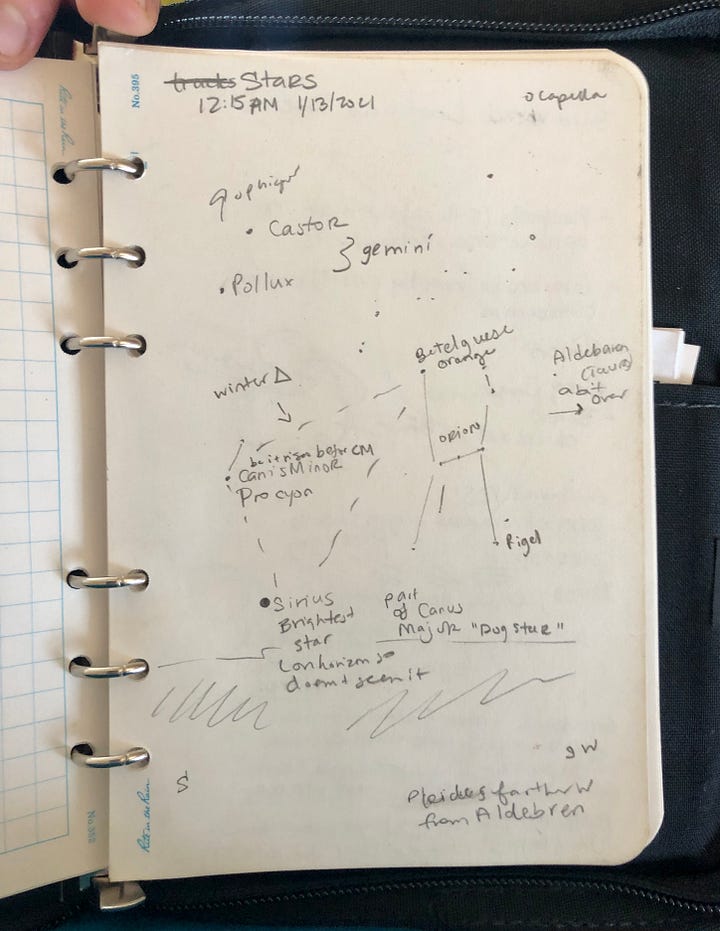
Here is a step by step project I made a few years ago that elaborates on my process for night sky sketches with watercolor and pen. To get my skies dark enough I will usually mix some black ink in with my watercolor wash.
Drawing the relative location of stars and constellations is one of my favorite examples of using my sketchbook to learn. The combination of drawing from a reference, and then comparing that to what I see outside, makes the stars which are very far away and often seem abstract more fixed in my memory. It makes me wonder how well people used to know the stars before we spent so much time inside with electricity.





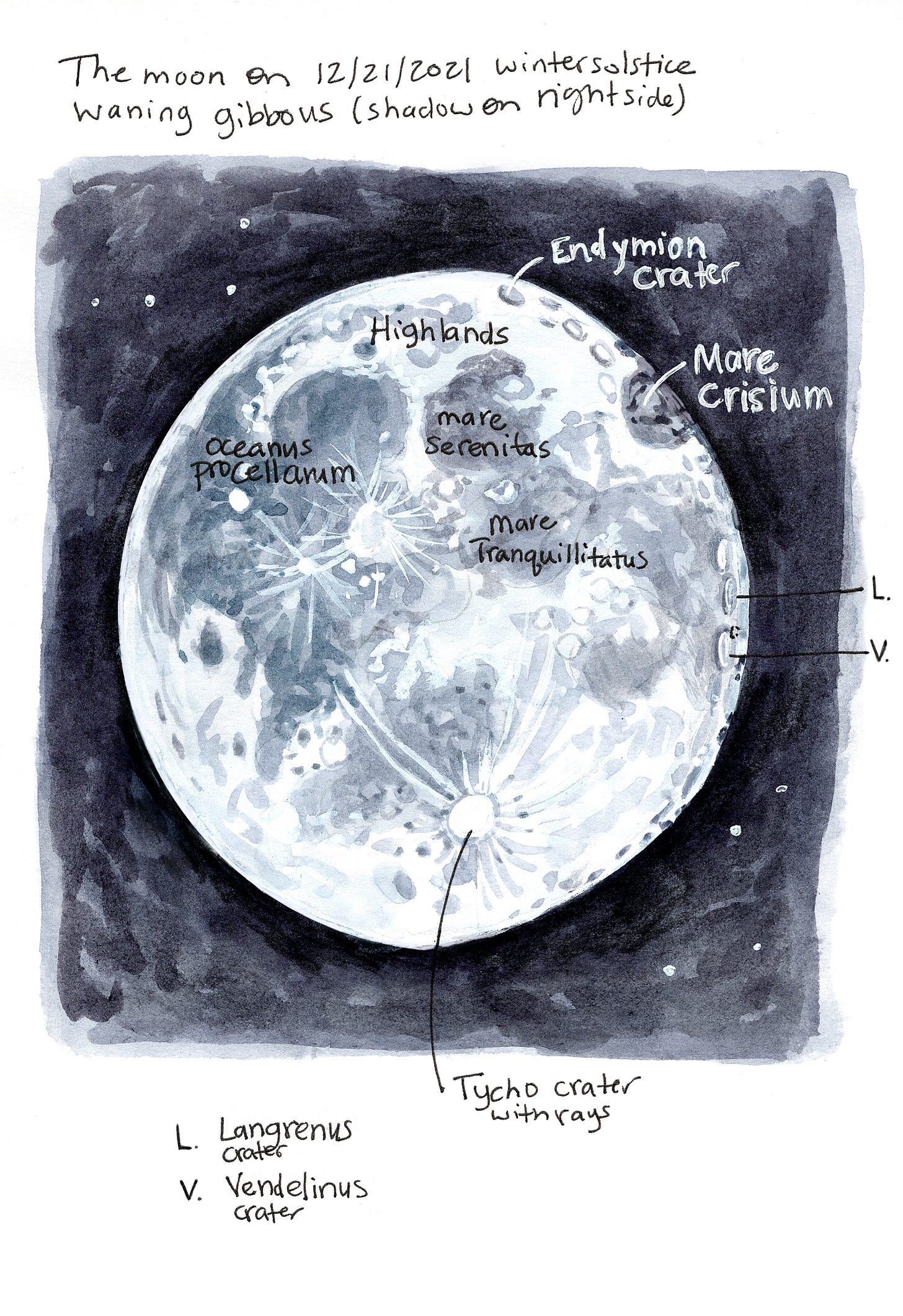

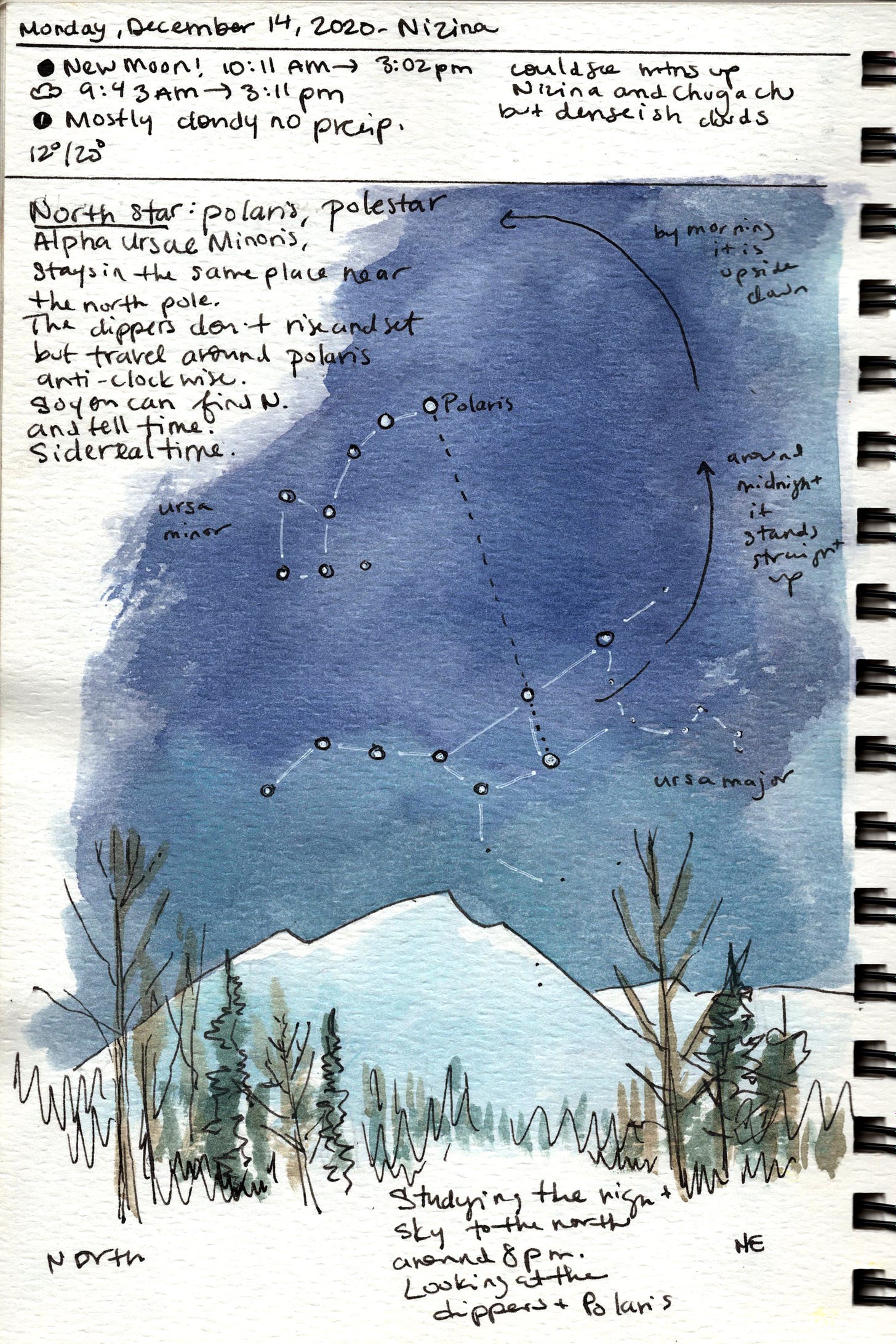
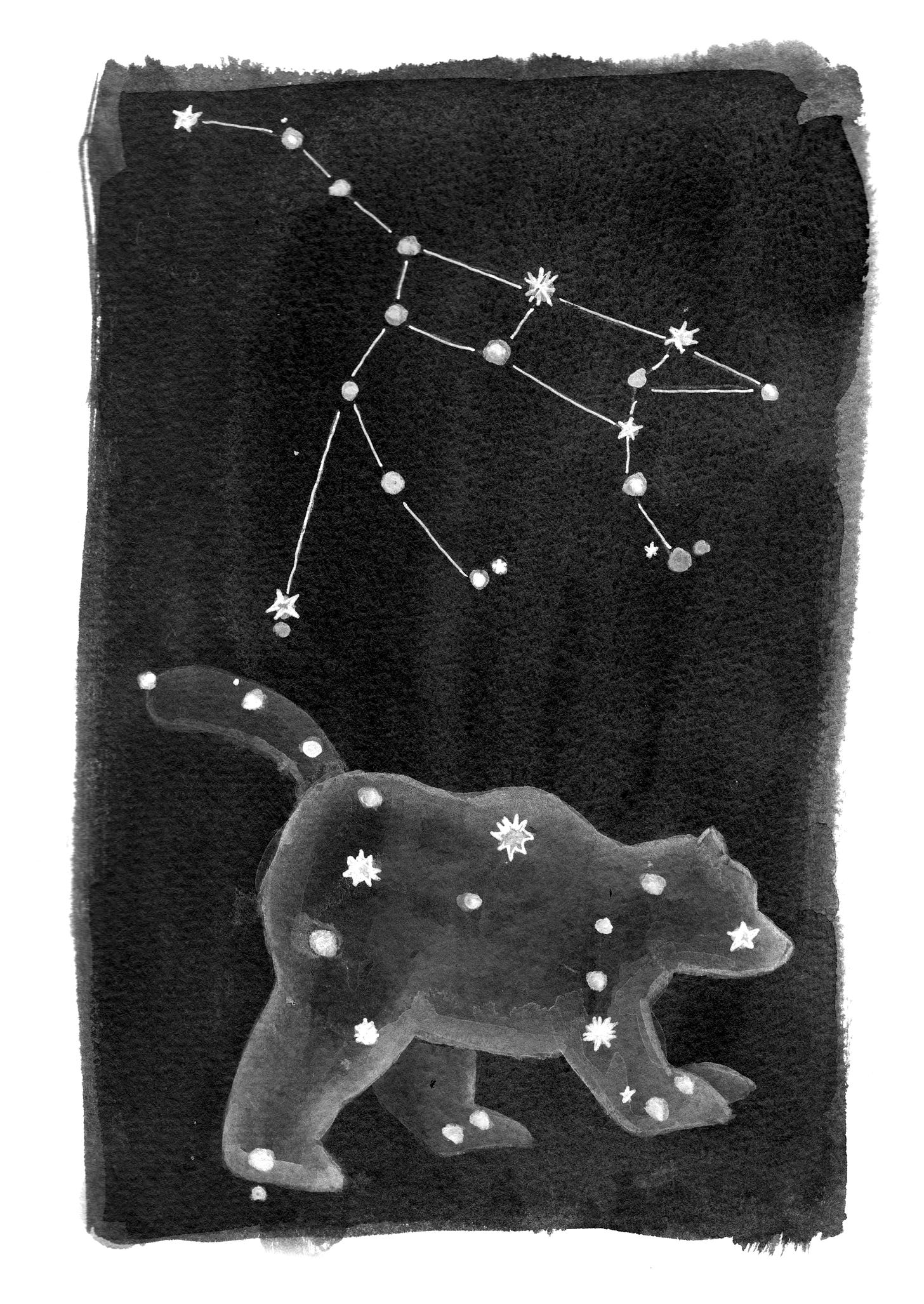

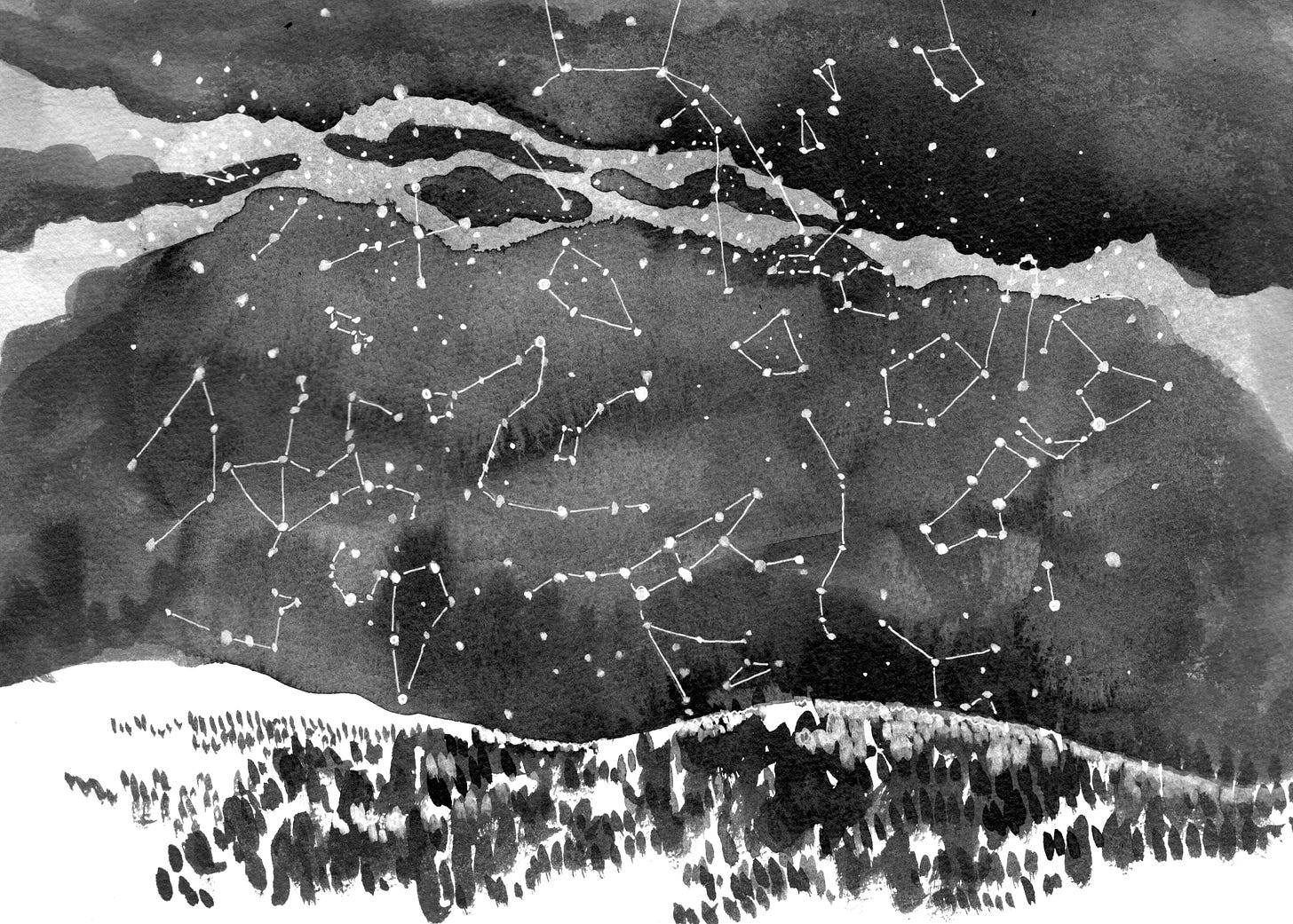

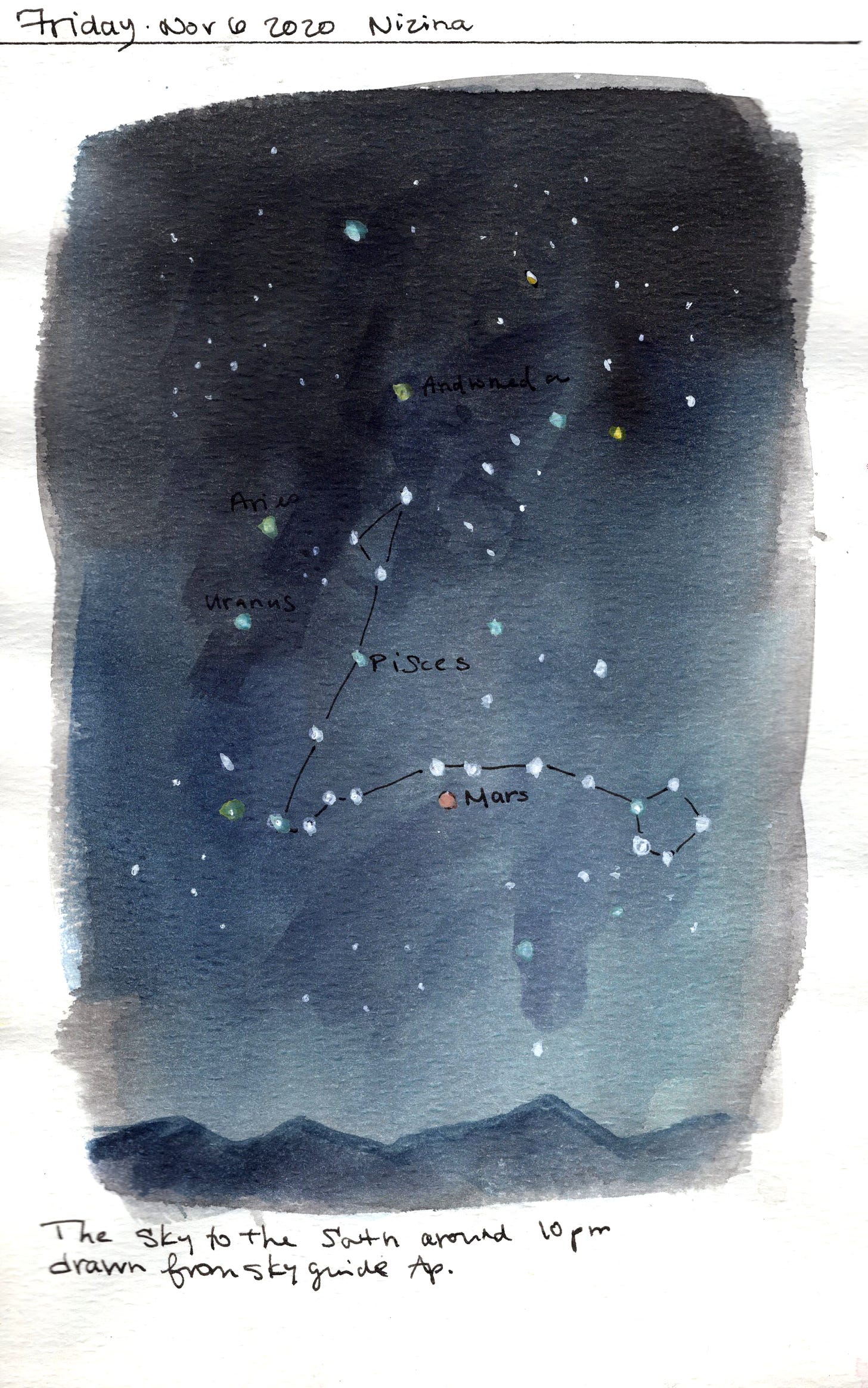
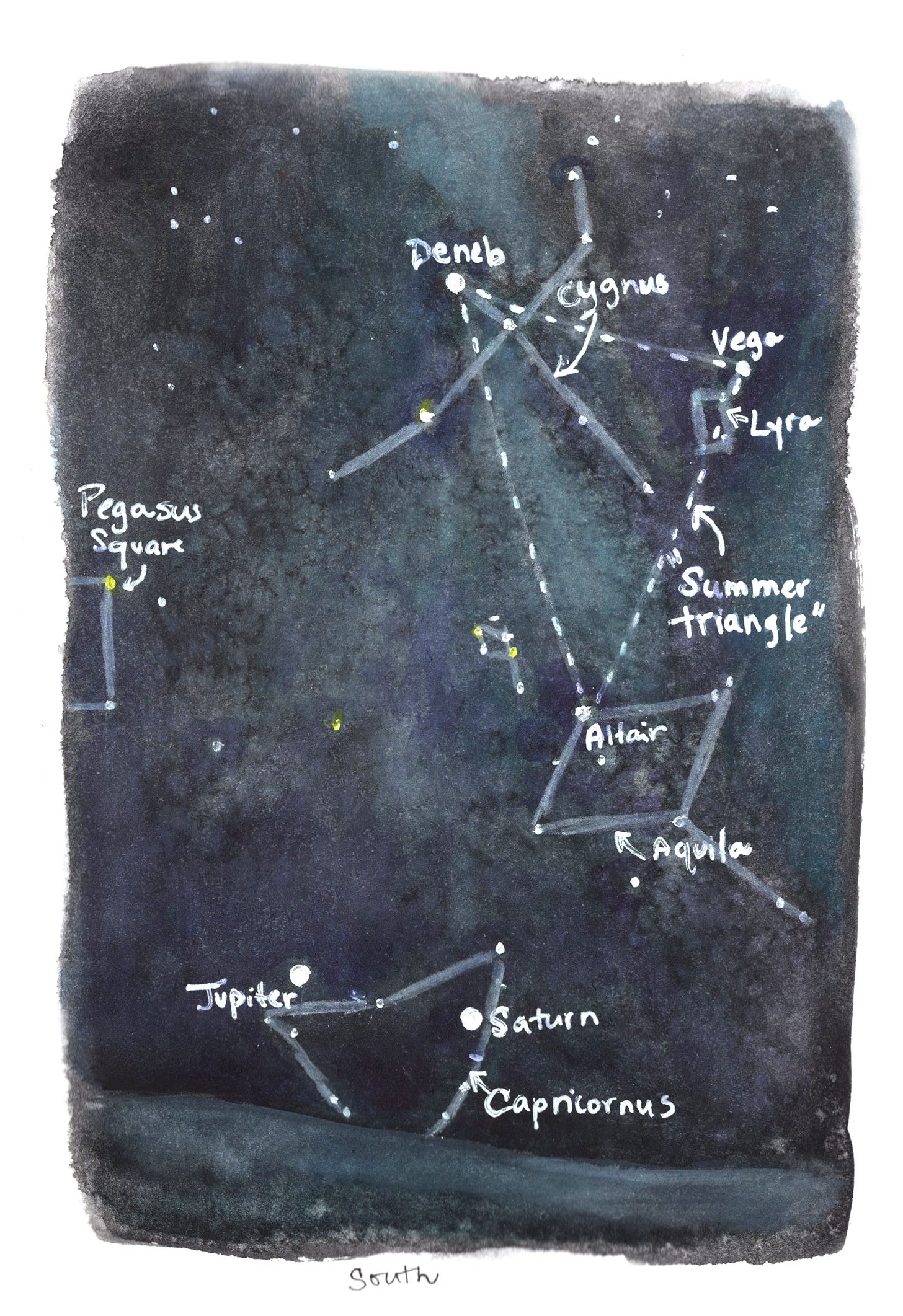
Love the illustrations, they're beautiful.
Rebecca Holden sent me here to see your night-sky watercolors. It’s the perfect medium to catch the liquid night! You use masking to set apart the stars, I presume? These paintings are glorious. Mute stars invite us to fill in the silence with our stories!